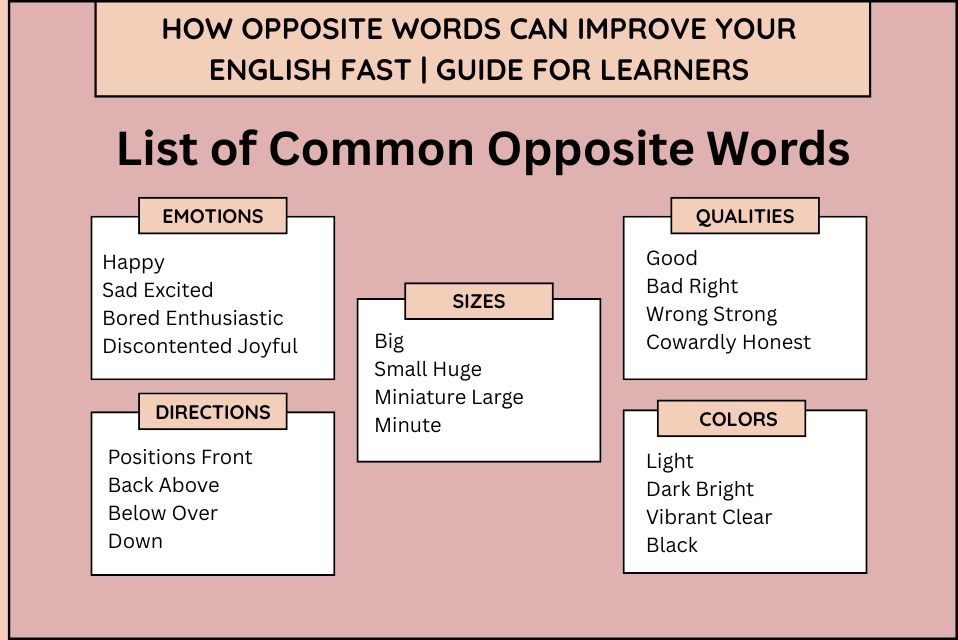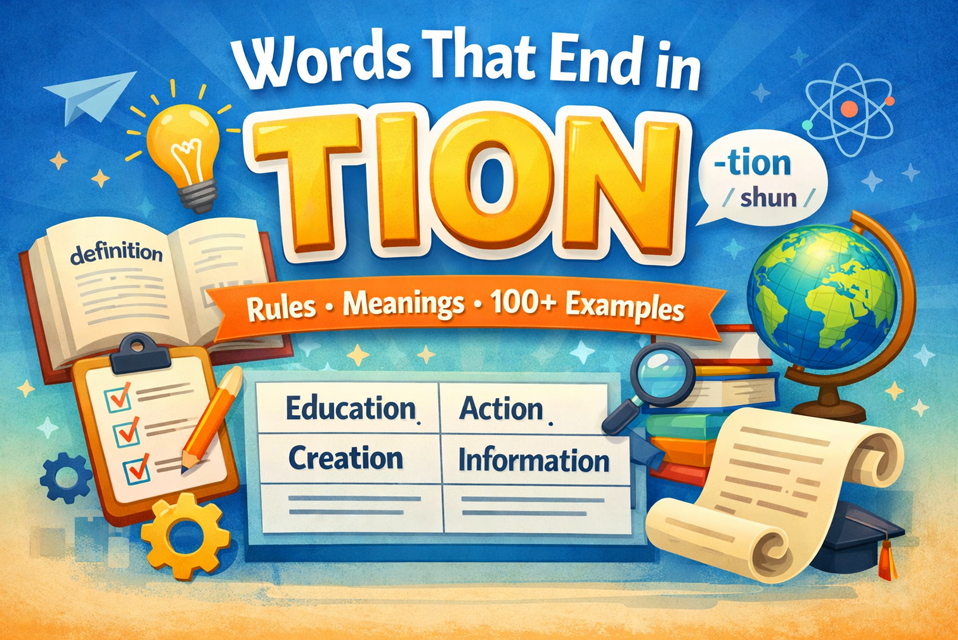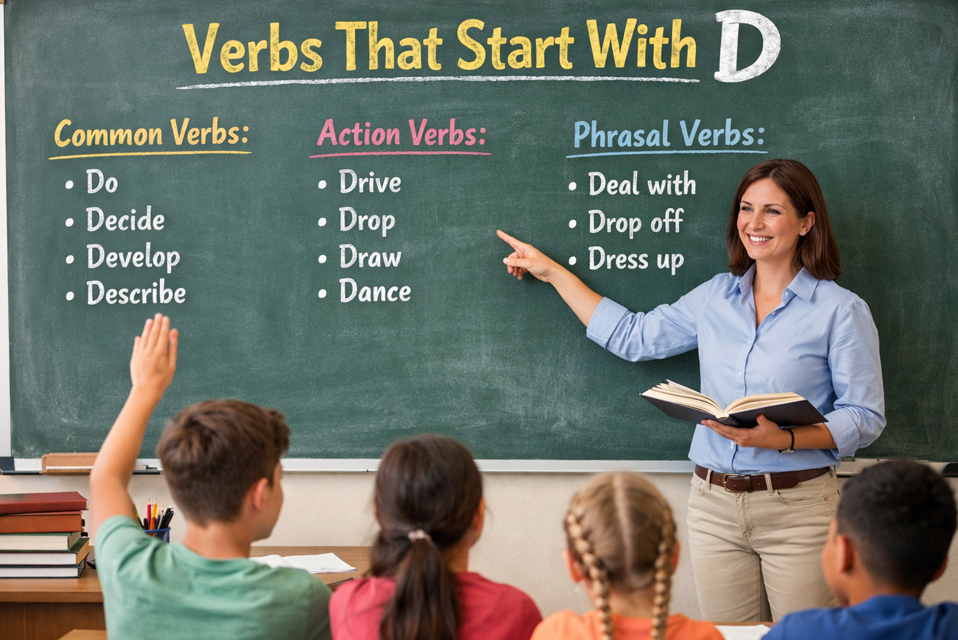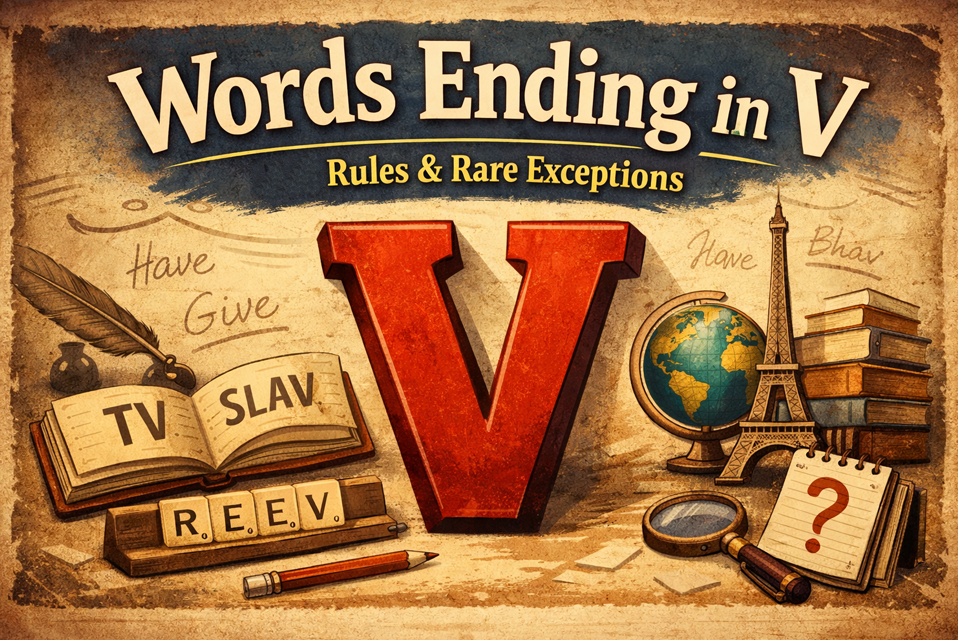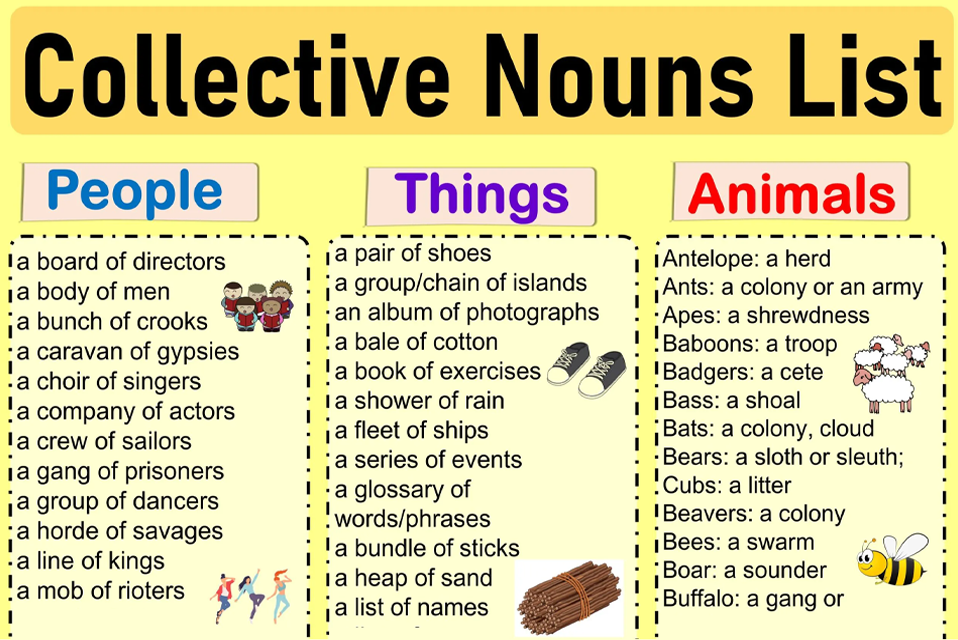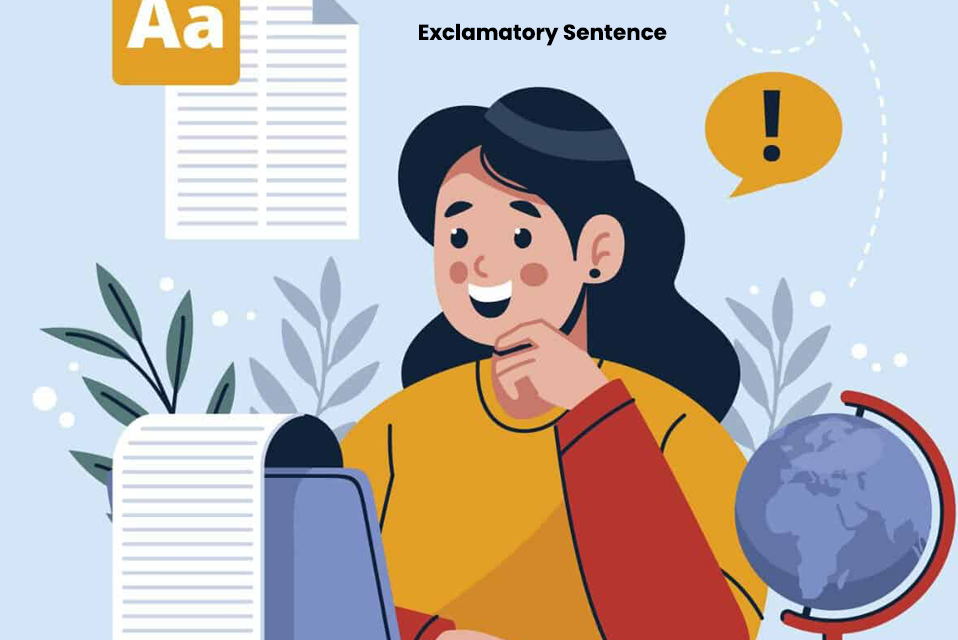In any language, the ability to convey contrasts is essential for clear communication. One of the most fundamental ways to express these contrasts is through opposite words also known as antonyms. Antonyms are pairs of words that express opposite meanings, and they play a crucial role in both written and spoken English.
Opposite words not only help in enhancing your vocabulary but also bring clarity, precision, and depth to your communication. Whether you are writing a story, delivering a speech, or simply having a conversation, the use of antonyms can make your ideas stand out and be understood more effectively.
What Are Opposite Words?
Opposite words are pairs of words that convey opposite meanings. These words are often called antonyms, a term derived from the Greek word antonymia, which means “against the name.” In essence, antonyms are the words that lie on opposite ends of a spectrum and provide contrast to each other.
Unlike synonyms which are words that have similar meanings antonyms provide a way to express opposing ideas, feelings, or attributes. For example, “hot” and “cold” are antonyms, just as “up” and “down” are. These opposites allow us to add layers of meaning to our communication, providing both clarity and emotional depth.
Antonyms are an important part of effective communication, enabling speakers and writers to express complex thoughts and feelings. They are a vital tool in storytelling, academic writing, everyday conversation, and even persuasive speech.
Why Are Opposite Words Important?
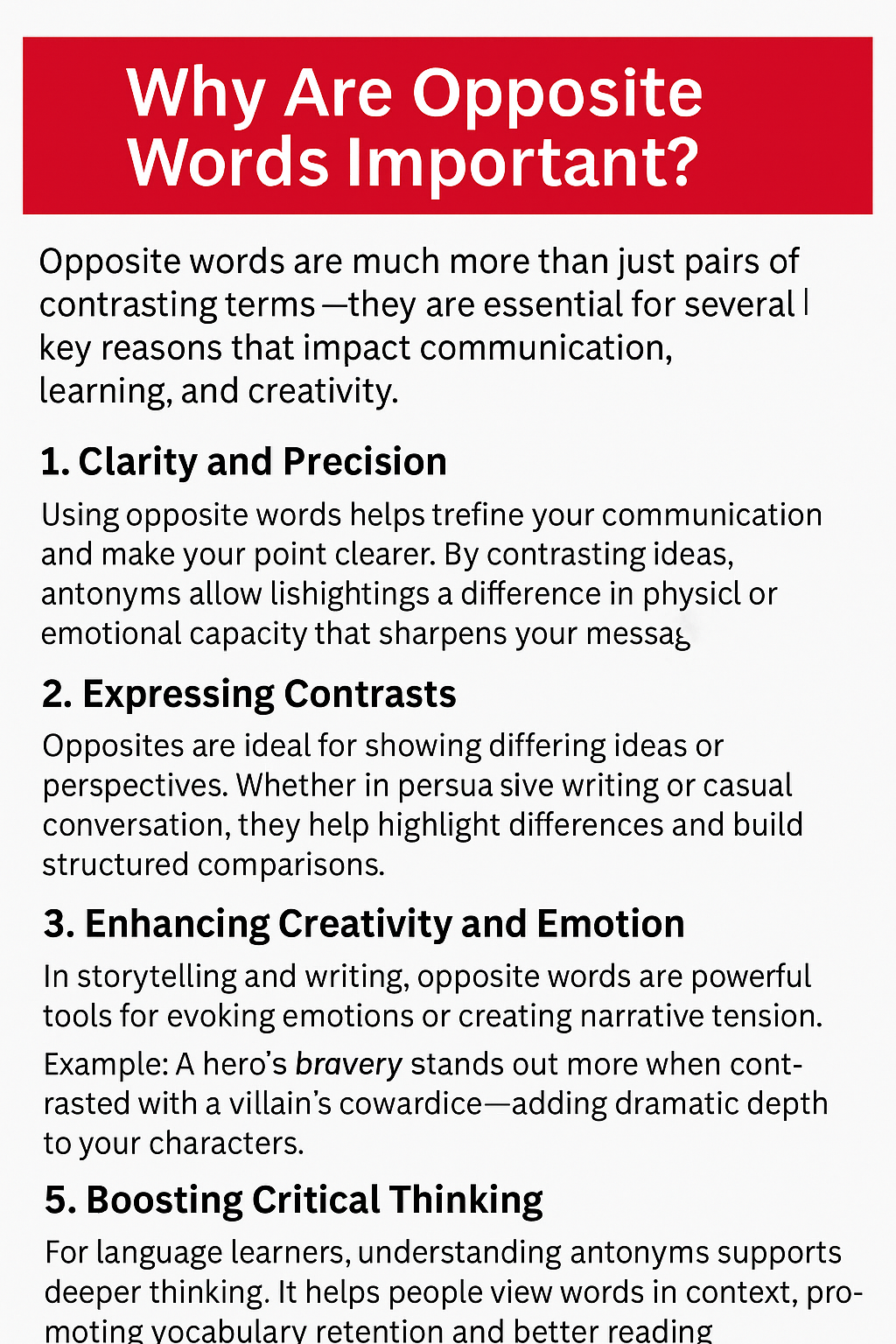
Opposite words are much more than just pairs of contrasting terms they are essential for several key reasons:
Clarity and Precision:
Using opposite words helps to refine your communication and make your point clearer. By contrasting ideas, antonyms allow listeners or readers to understand the concept in more detail. For instance, contrasting “strong” and “weak” highlights a difference in physical or emotional capacity that can clarify a point.
Expressing Contrasts:
Opposites are ideal for showing contrasting ideas or perspectives. Whether in argumentative writing or casual conversation, they help in drawing attention to differences and framing discussions.
Enhancing Creativity and Emotion:
In storytelling, opposite words can be used creatively to evoke emotions or create tension. For example, in narratives, describing a hero’s bravery in contrast with a villain’s cowardice brings dramatic depth to the characters.
Critical Thinking:
When learning a language, understanding antonyms encourages critical thinking by helping learners see a word in relation to its opposite. This can improve vocabulary retention and comprehension.
Problem-Solving:
In practical decision-making or creative writing, considering opposites can offer clarity in evaluating different alternatives and solutions.
When to Use Opposite Words
Antonyms are incredibly versatile and can be used in many situations, enhancing your language skills. Here are some specific instances when you might want to use opposite words:
Clarifying Meaning:
When you want to simplify a complex idea or clarify a concept, using antonyms can make the distinction clearer. For example, you can explain the difference between two options by showing their opposites.
Expressing Emotions:
Antonyms are particularly effective in emotional expression. You can emphasize contrasting moods, feelings, or states of mind. For example, contrasting words like “happy” and “sad” can convey the spectrum of emotions more vividly.
Describing Characteristics:
Use opposite words to describe contrasting features of people, objects, or places. This helps in providing a fuller description. For instance, contrasting “tall” and “short” when describing two people gives a clear comparison of their physical attributes.
Giving Directions:
Opposite words are often used to provide clear instructions. Words like “up” and “down,” “left” and “right,” or “in” and “out” are essential in helping people navigate spaces or understand spatial relationships.
Creating Contrast in Writing:
In literature and storytelling, antonyms are used to build tension, show conflict, or create irony. By highlighting differences, you make your writing more engaging and thought-provoking.
List of Common Opposite Words
To help you expand your vocabulary and use antonyms effectively, here’s a list of common opposite words across various themes:
| Emotions | Happy | Sad Excited | Bored Enthusiastic | Discontented Joyful |
| Sizes | Big | Small Huge | Miniature Large | Minute |
| Qualities | Good | Bad Right | Wrong Strong | Cowardly Honest |
| Directions | Positions Front | Back Above | Below Over | Down |
| Colors | Light | Dark Bright | Vibrant Clear | Black |
Examples of Opposite Words in Sentences
Understanding how opposite words are used in sentences can deepen your grasp of their function and impact. Here are some examples illustrating antonyms in different contexts:
Emotions Happy/Sad:
Bradley was proud to receive the promotion at work, but he was disappointed to learn he wouldn’t be leading the same team of colleagues.
Excited/Bored:
The child’s eyes sparkled with excitement as she unwrapped the gift, while her brother yawned in boredom.
Sizes Big/Small:
The enormous elephant lumbered past the tiny mouse without even noticing it.
Huge/Miniature:
The giant skyscrapers loomed overhead, casting a shadow over the small storefronts lining the street below.
Qualities Strong/Weak:
The tenacious climber conquered the summit, while his weak-willed companion waited at the lodge.
Honest/Dishonest:
Unlike Martha’s shifty behavior, which raised concerns among the staff, his trustworthy demeanor made him the ideal candidate for manager.
Directions/Positions Up/Down:
The airplane soared high above the clouds before descending low to the ground to finally land on the runway.
In/Out:
The spider crawled beneath the table, seeking refuge from the rain above.
Opposite Words in Language Learning
When learning English or any other new language, understanding opposite words plays an important role in mastering vocabulary and expanding linguistic skills. Here’s how knowing antonyms can benefit you as a learner:
Enhances Vocabulary:
Learning opposites expands your word bank and helps you become more versatile in expressing yourself.
Improves Comprehension:
Recognizing the opposites of words can help in better understanding and interpreting spoken or written content.
Cultural Insight:
Exploring antonyms can also provide insight into the culture of a language, as certain antonyms reflect attitudes, values, and beliefs that are specific to that culture.
By incorporating antonyms into your learning journey, you gain a deeper understanding of the language, making it easier to communicate effectively in diverse contexts.
Conclusion:
Mastering opposite words is a simple yet powerful step in strengthening your English language skills. Antonyms help you express ideas more clearly, compare situations effectively, and communicate emotions with greater precision. Whether you’re writing an essay, having a conversation, or improving your vocabulary for exams, knowing the right opposites can make your English more fluent and impactful.
Keep practicing these word pairs in your daily life, and over time, you’ll notice greater confidence and clarity in your speech and writing. Happy learning!
FAQs: How Opposite Words Can Improve Your English Fast
1. What are opposite words?
Opposite words, also called antonyms, are word pairs that have completely different meanings, such as “hot” and “cold” or “happy” and “sad.”
2. Why is it important to learn opposite words?
Learning opposite words helps improve your vocabulary, express ideas more clearly, and develop a deeper understanding of word meanings and sentence context.
3. How can I learn opposite words effectively?
Practice with flashcards, use them in daily conversation, read stories, and try writing sentences using antonym pairs to reinforce your understanding.
